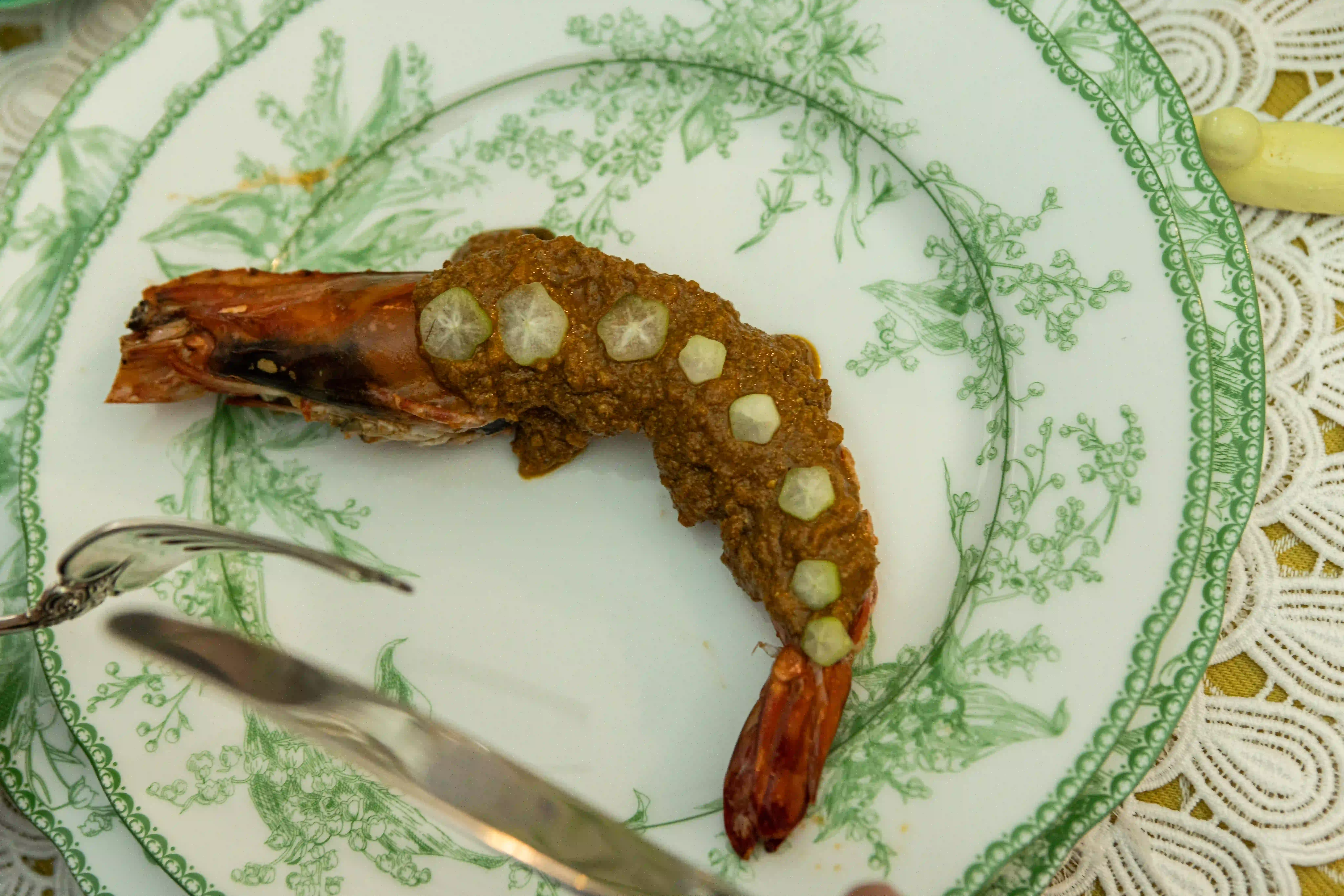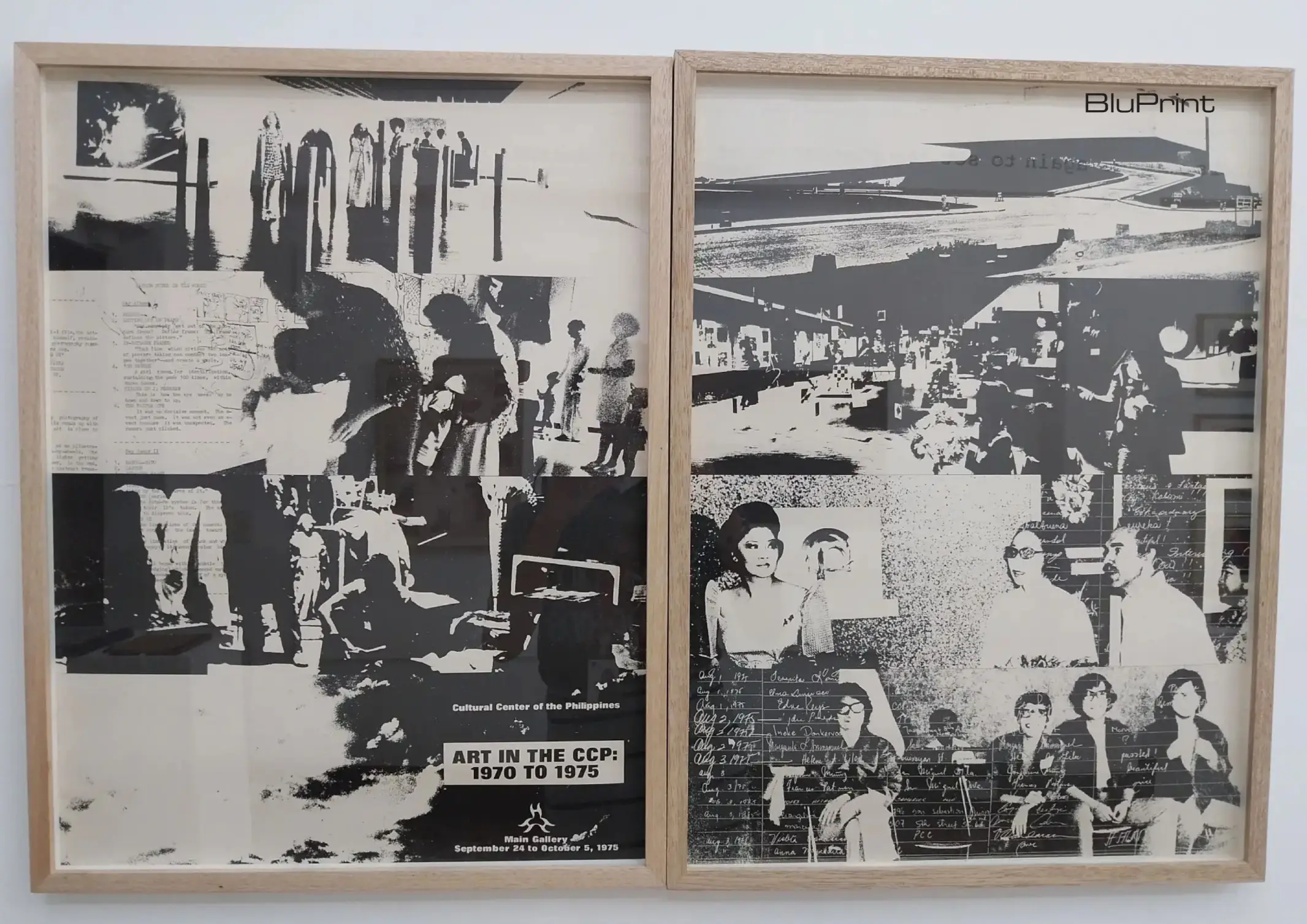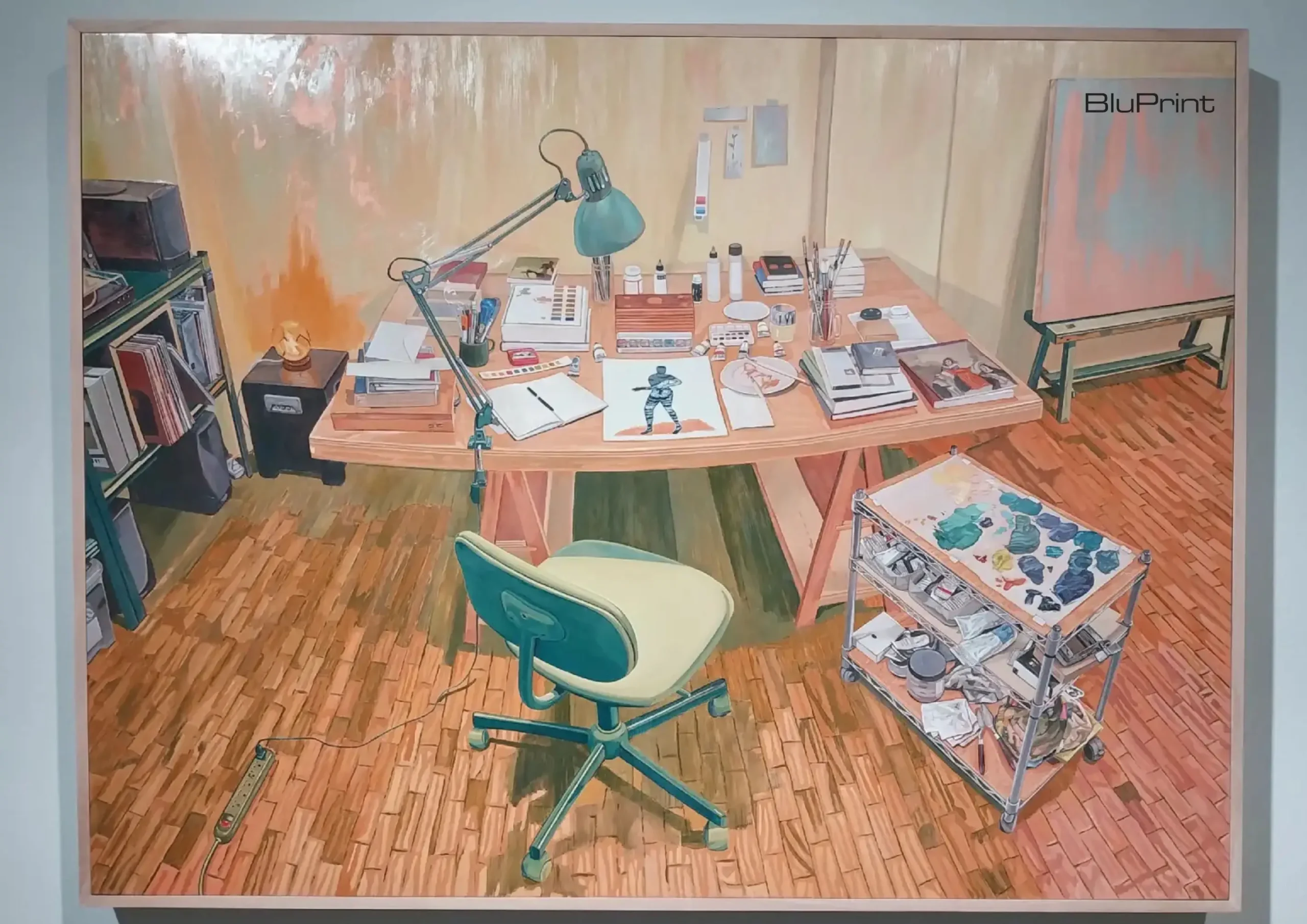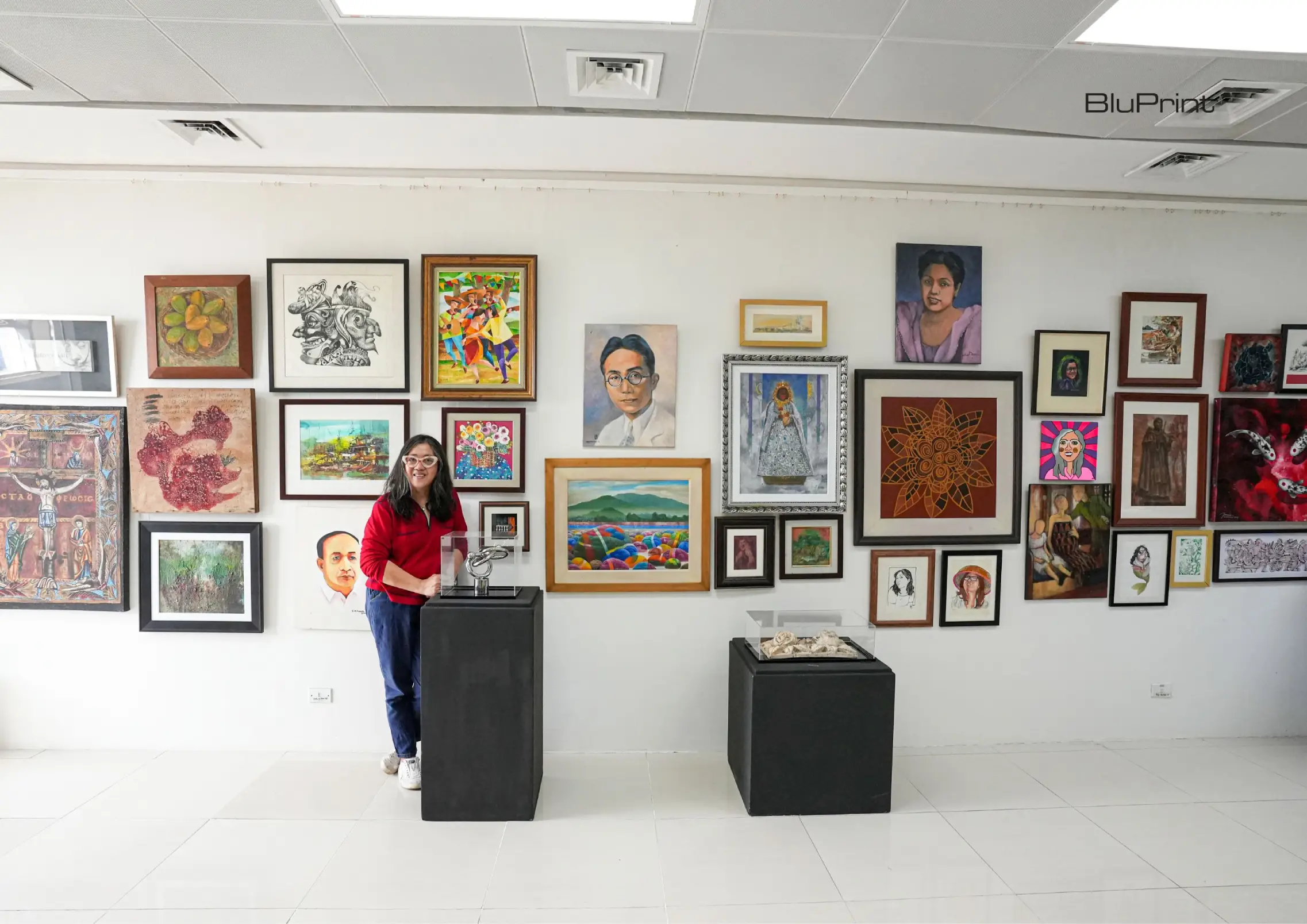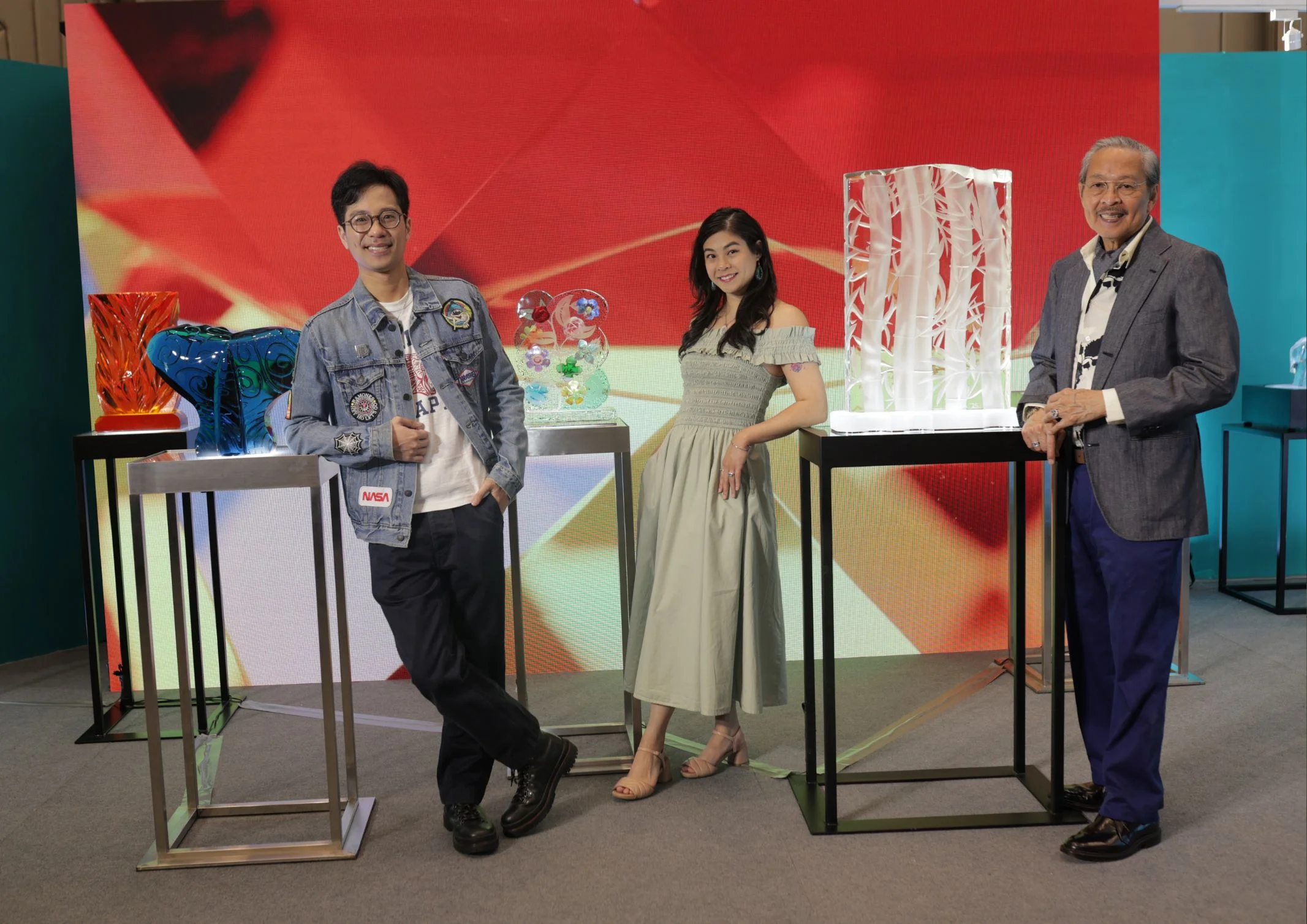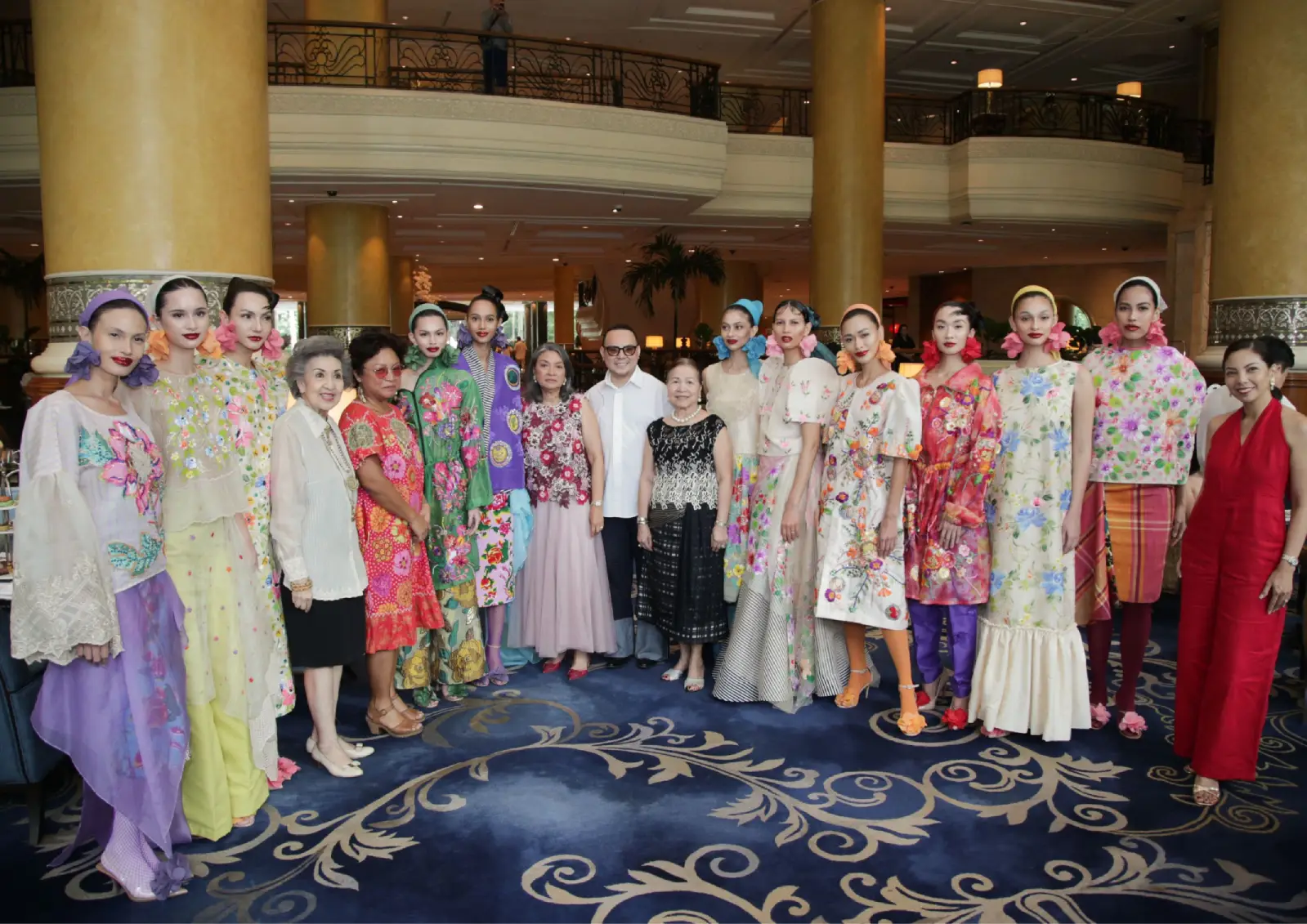Early Philippine Contemporary Art (1969-1985) is an exhibition at Calle Wright curated by Judy Freya Sibayan, a pioneer of Philippine conceptual art. A “self-archive” from Sibayan, the exhibition features photographs, write-ups, and advertisements. The exhibit showcases Sibayan’s own works alongside those of Huge Bartolome, Roberto Chabet, Ray Albano, and Johnny Manahan. Also represented are Nap […]
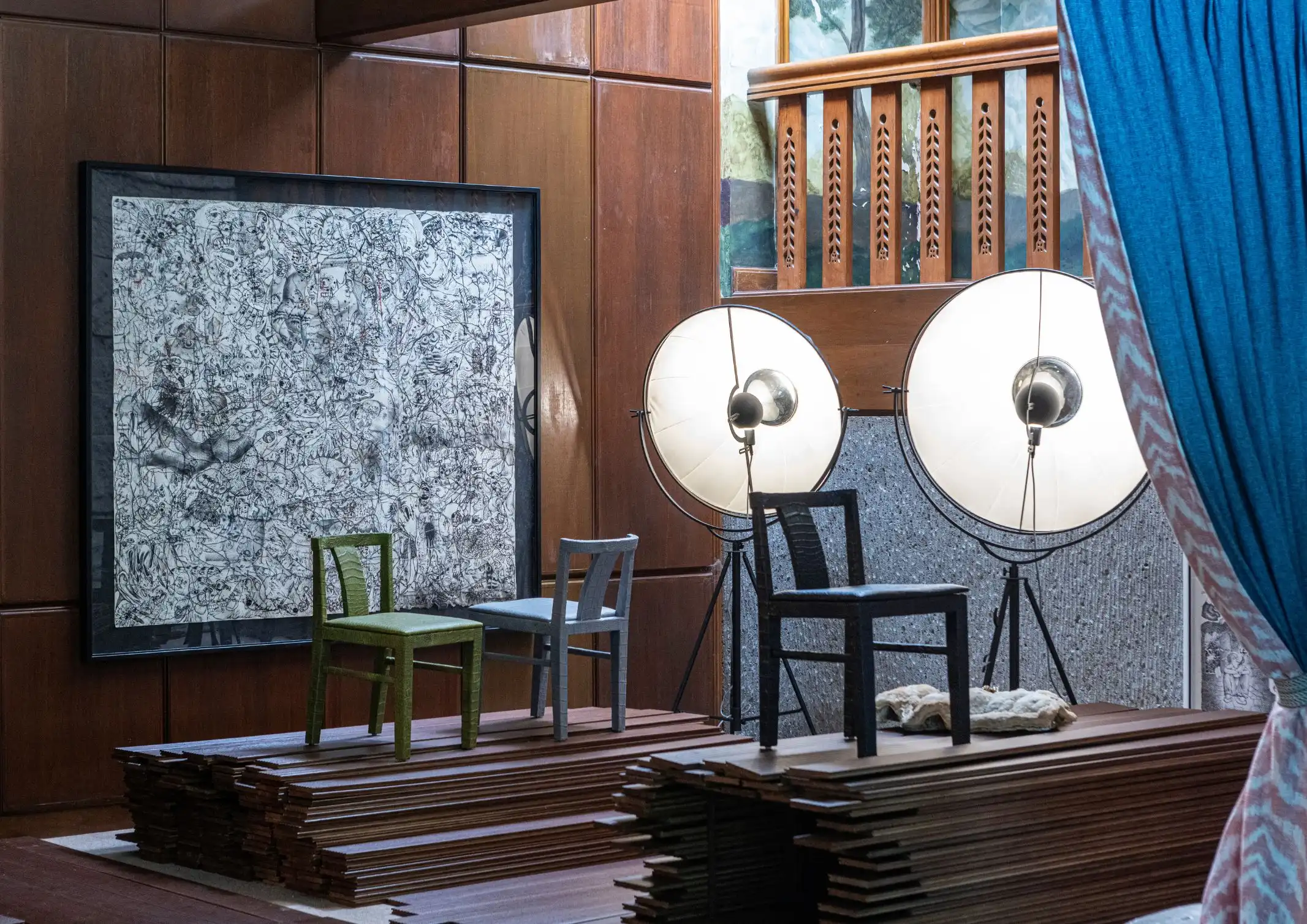
The House of O: Inside the World of Ricco Ocampo
Ricco Ocampo is no stranger to retail. He found success in launching lasting brands such as eyewear i2i New York and clothing brands Sari-Sari Store and The Black Shop. His eye is sharp when spotting what sells and is in tune with the pulse of the market. At the House of O – his home in Makati – he organized a delectable kapampangan lunch together with Bluprint EIC Geewel Fuster. Fuster gathered friends in the industry to not only catch up over a meal and Omotesando Koffee, but also to see the latest evolution of Ocampo’s retail concept.
The Rebirth of an Icon
Ocampo resurrected the chair that he designed and sold at Barneys almost two decades ago. “These are the chairs that I did 20 years ago. Through the years people would always say, ‘Why don’t you reproduce them and sell them again?’ So I just didn’t think about it until one day I just realized I want to go back to work with alligator skin agin,” he recalls. “We sold them in Barneys among other places. I showed them to architects in the U.S. such as Peter Marino and interior designer Kelly Wearstler. So now they’re available again.”
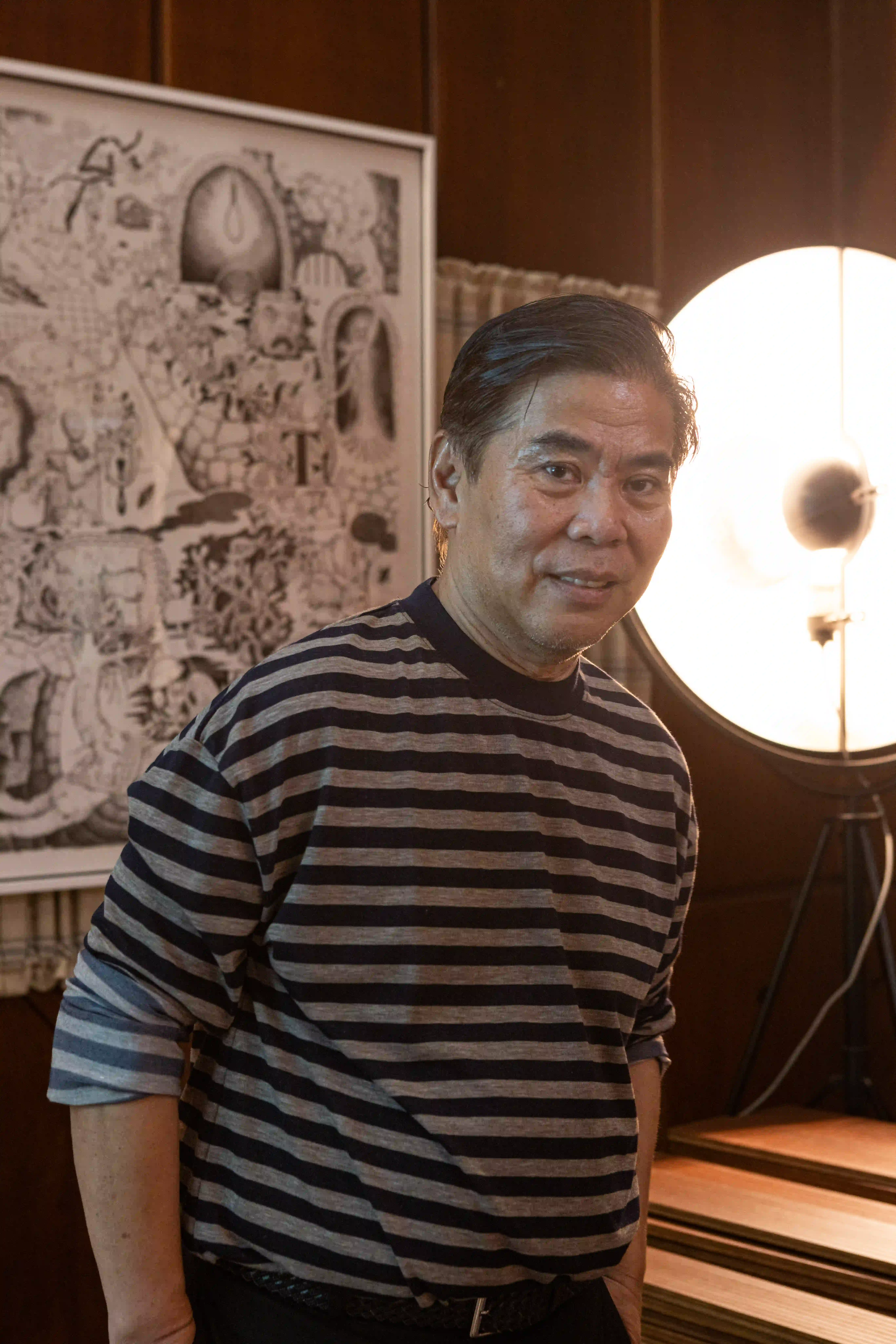
The four-legged, symmetrical chair has a classic form with a gentle and ergonomic curve for a backres. A pair are upholstered fully with alligator skin – one in apple green and another in light grey. Another one bears what seems to be lacquered tortoise shell or burl wood with a black alligator skin seat with a its tail playfully attached.
“You can remove the tail if you want,” he demonstrates. “Alligator skin is very complicated to use because the skin is not just a big square of skin. You have to learn how to play with it. You learn how to maneuver where to place the belly, the tail, the hands, the head. So it was a challenge for me.”
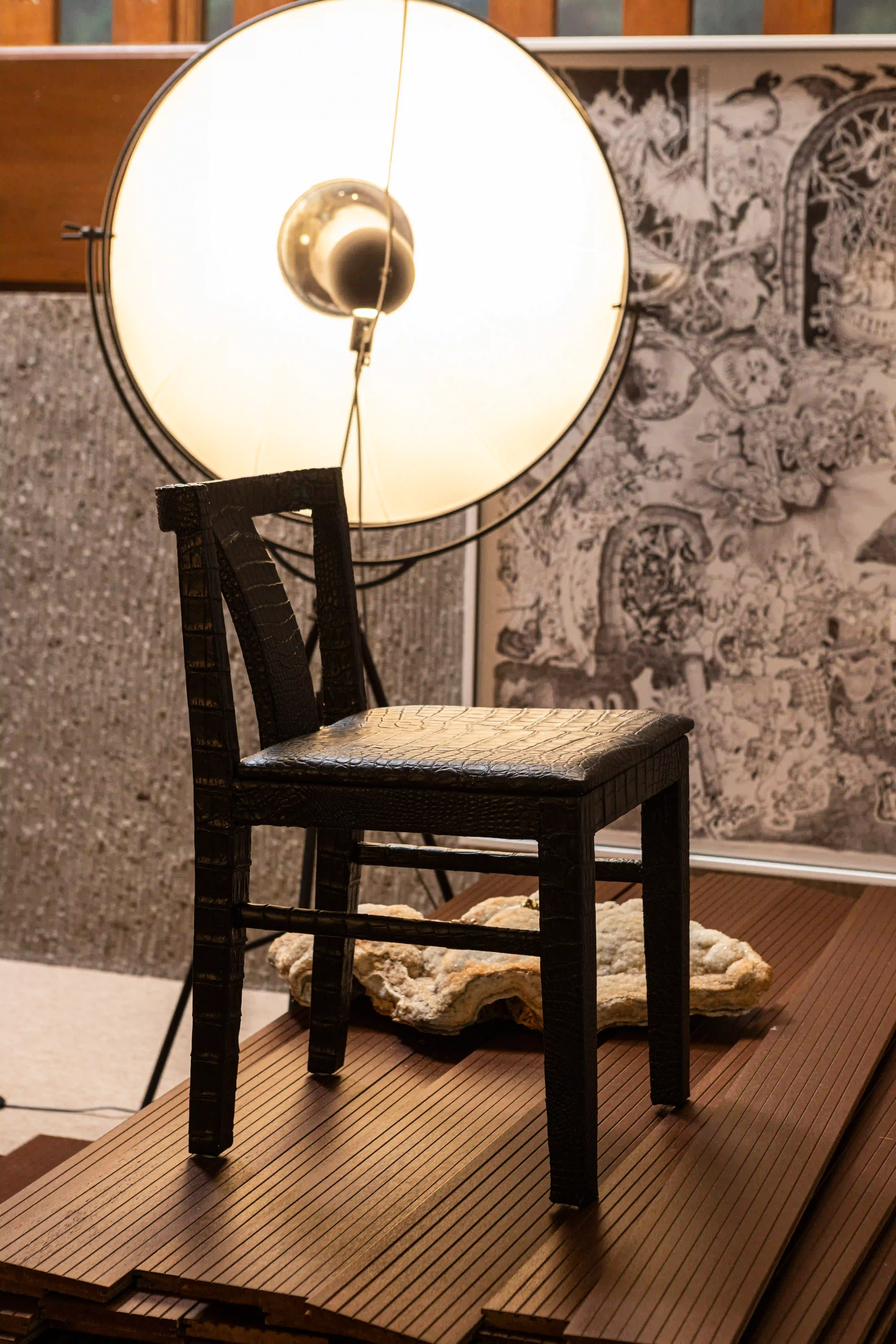
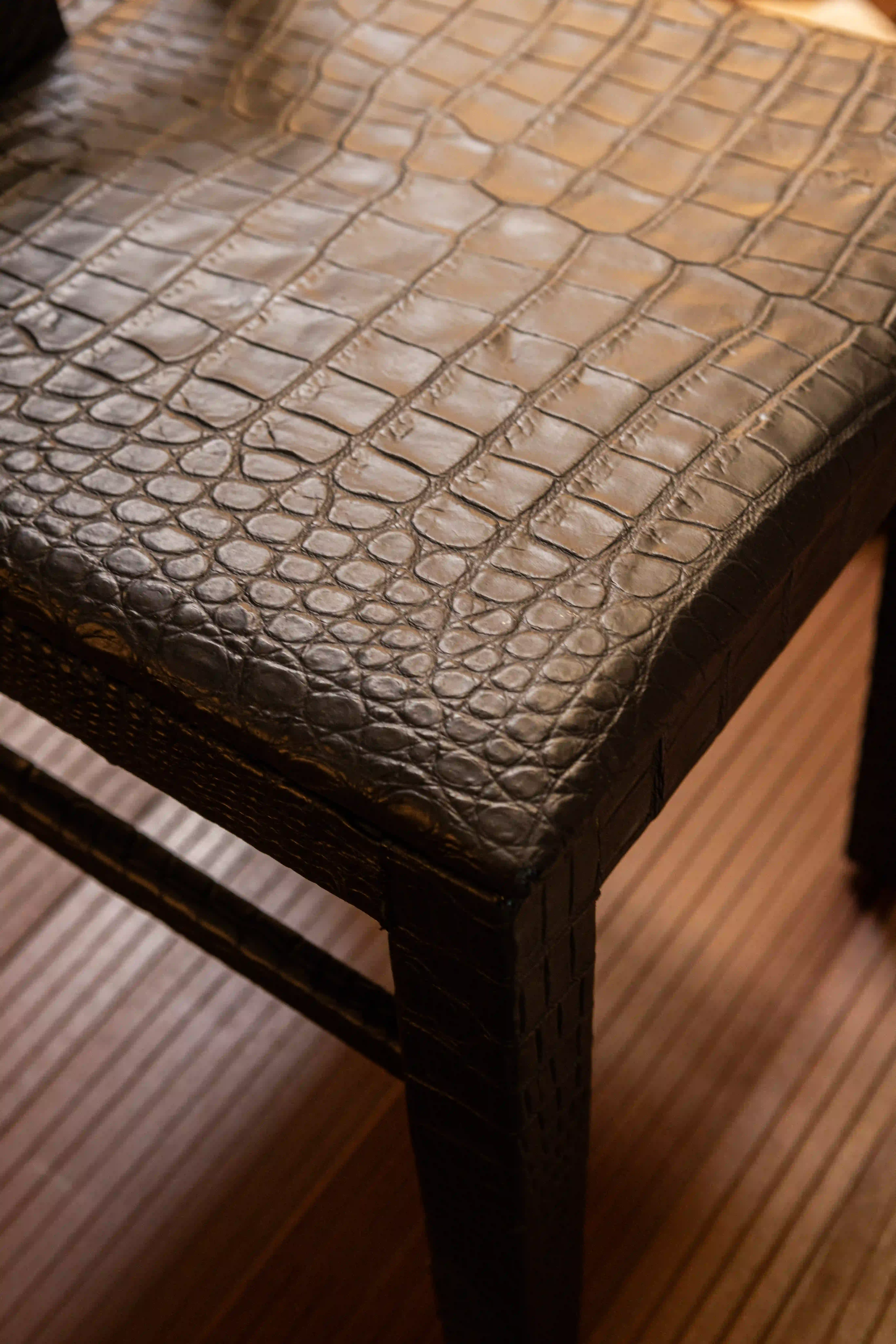
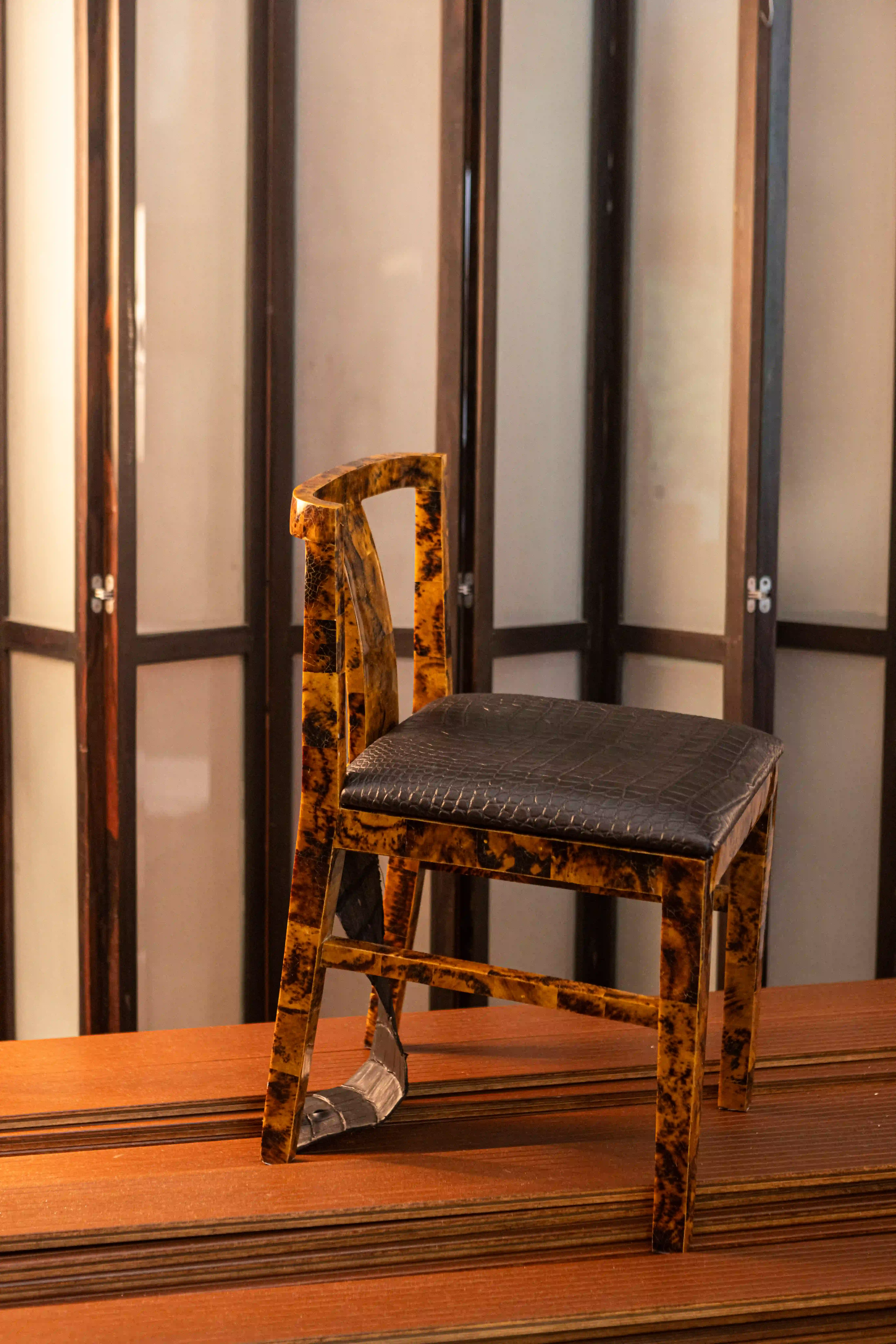
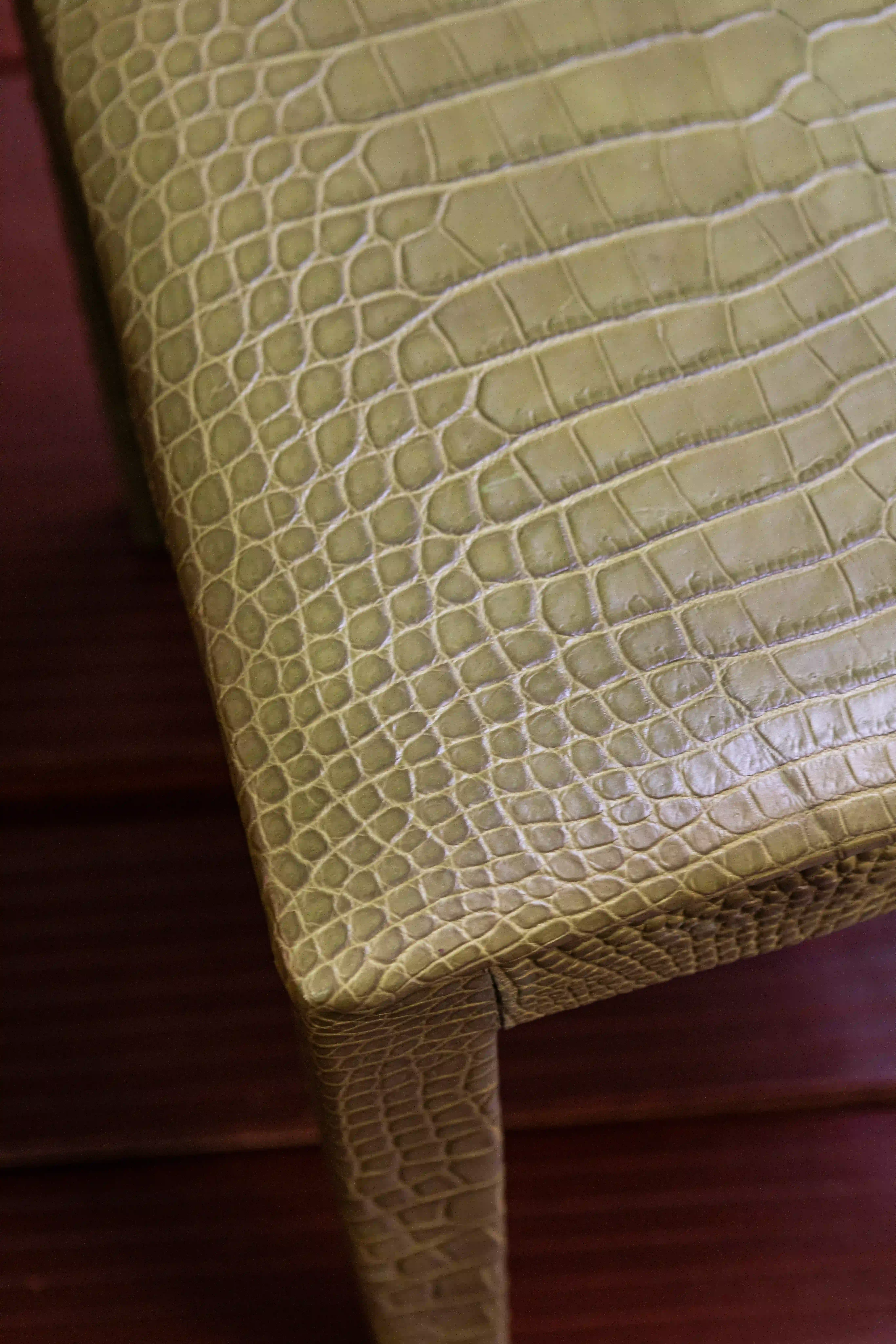
He has set up part of his living area to display the chairs with large wall art from his friends at Art Informal. In a room in the lower ground floor, there are shelves of kitchen ware he has sourced from his travels, linens from India, and some throw pillows from Morocco. “The thing is, I decided I do not want to focus on solely being a furniture maker nor do I want to focus solely on selling plates. So for me, anything that catches my attention that I feel is luxurious then I will go for it,” he adds.
Local Artisans, Global Vision
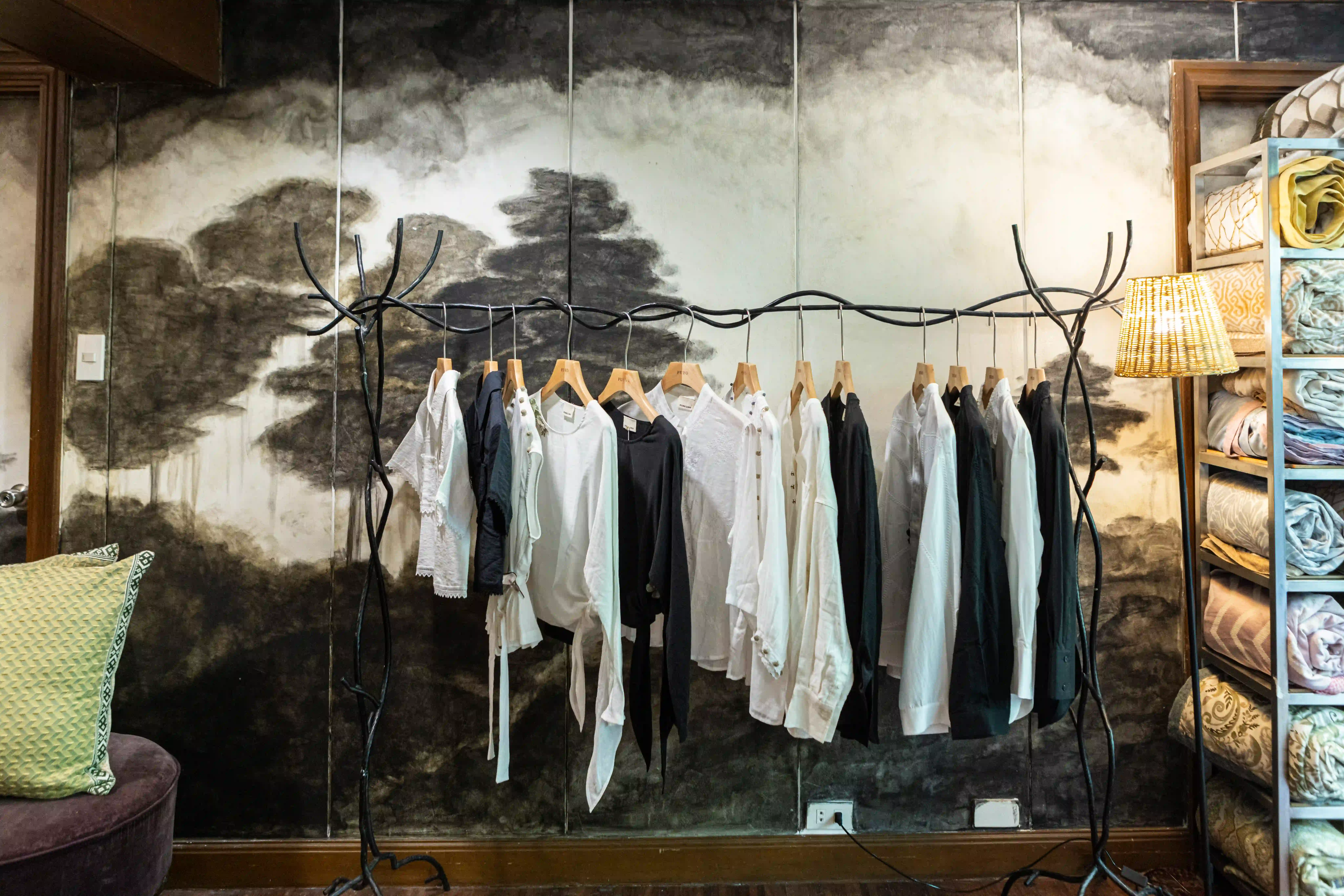
He has also partnered with artisans from La Union – where he spends most of his time nowadays – to make coasters and other kitchen and dining items. “I’m much busier in La Union than in Manila because La Union is where I go to the market, where I have my hair cut, where I do my pilates, where I do my daily massage, where I walk by the beach every day. I have a routine. So i do work with rattan makers, with embroiderers, with furniture makers,” he enumerates. “So it’s a very busy life. It’s all the things I want to do.”
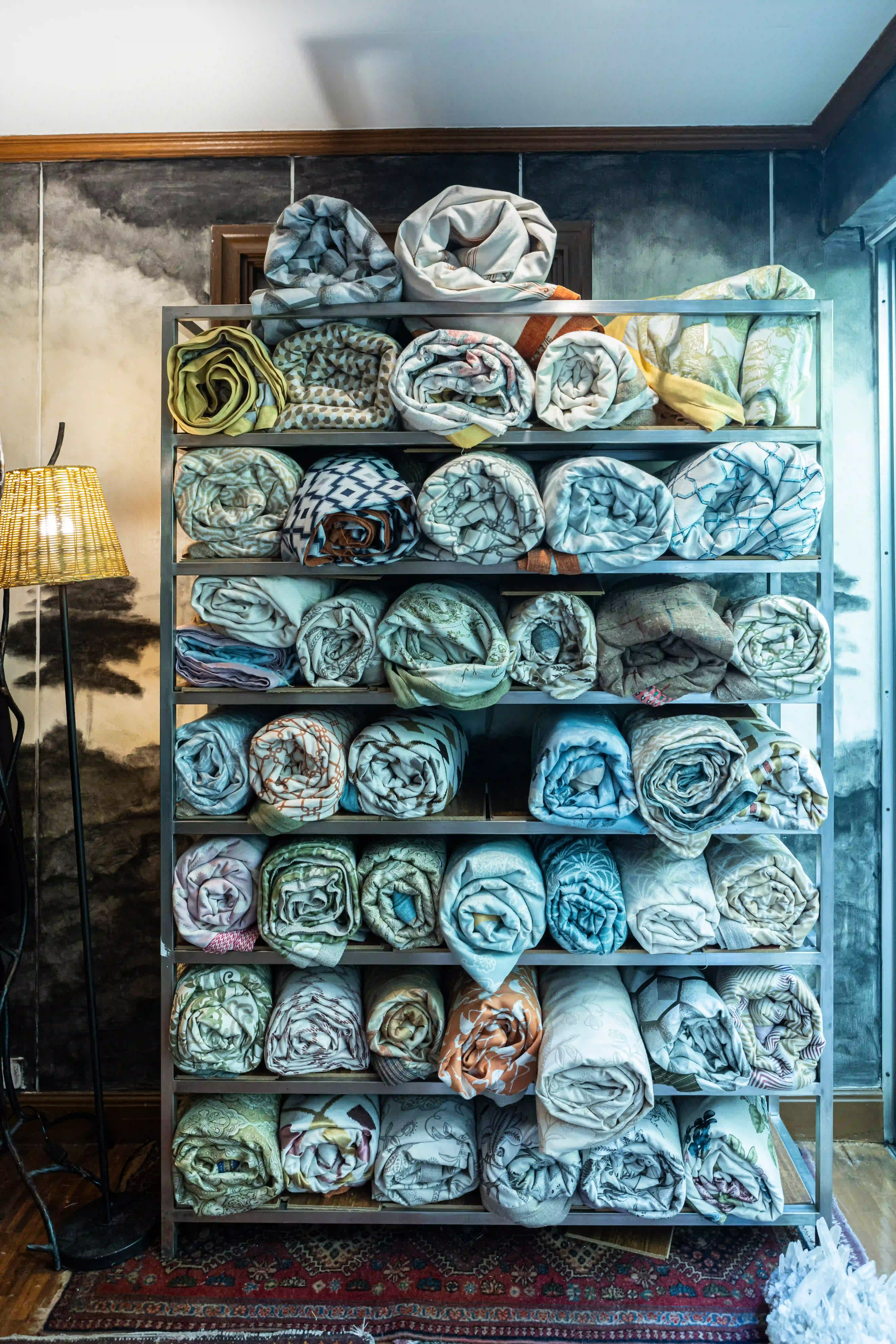
Arnold Austria and Sonny Sunga of Jagnus Design Studio express their love for the retail brands Ocampo opened in the past and ask him if he were to open them again anytime soon. Ocampo’s answer is honest and refreshing, “I’m not as young as I used to be. I think the new journey of my life does not require to open a retail store, a gallery or a commercial place for things that I do. So I decided to just open a studio in my home and invite some friends, acquaintances or people that are interested to see them in my home. But it’s always a philosophy of mine to always serve food because I come from a province that finds food very important in a home.”
Prefaced as “A Fresh Retelling of Kapampangan Cuisine”, the lunch started with penoy deviled eggs topped with Nomad caviar. Bottles of Antipodes water were poured into glassware with flowers hand-painted by artisans in La Union. A whole fresh prawn is grilled and served with an indulgent blanket of pure aligue and slices of kamias for a tart acid to cut the richness.
House of O is only available by a reservation through their Instagram account. Although Ocampo spends only one third of his time in Manila these days, it’s the urge for him to share his discoveries with others that inspires him to continue retail even through this laid-back iteration.
Read more: A Peek into Ricco Ocampo’s Curated Sanctuary
Photographed by Jar Concengco


